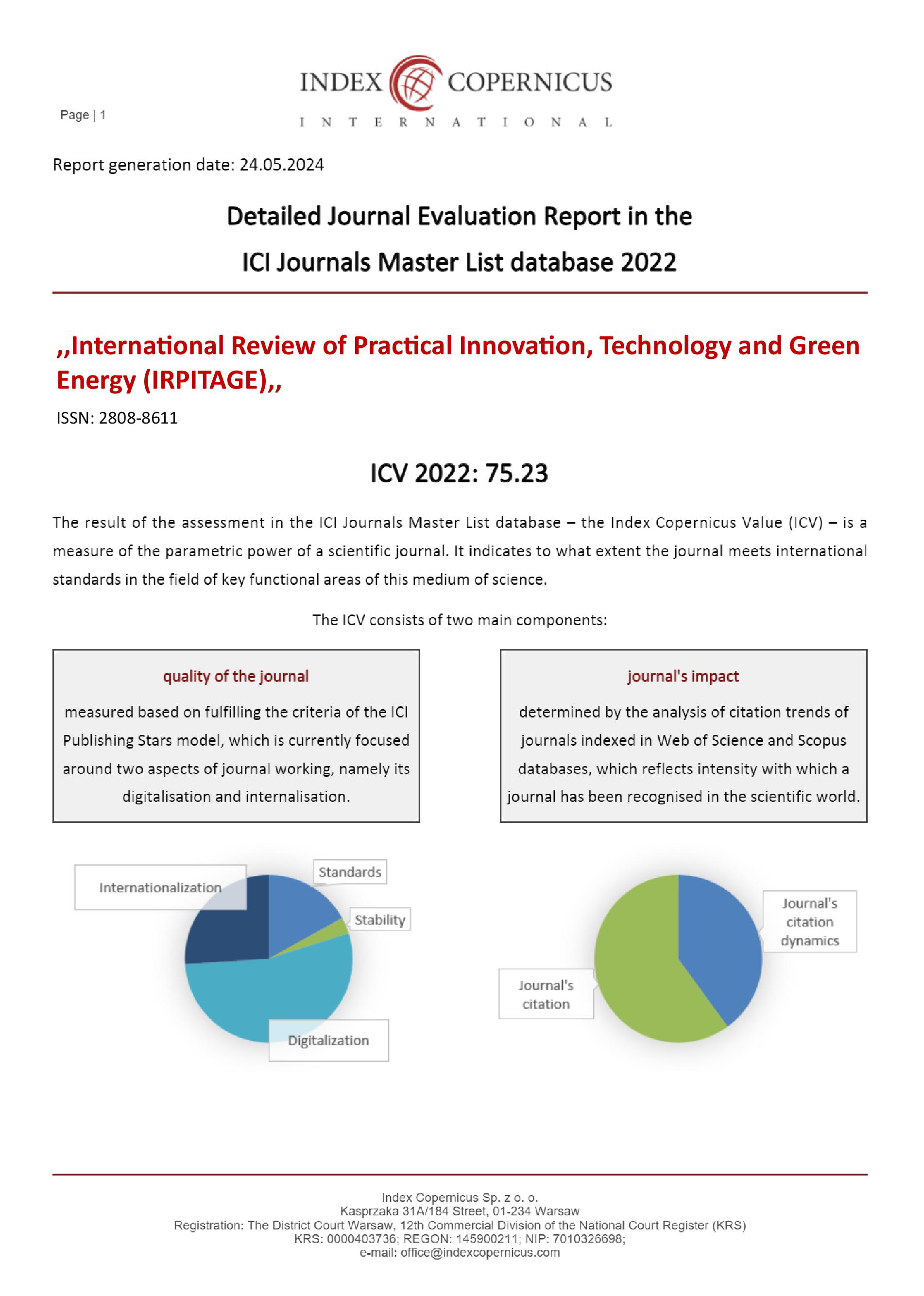A COMPARISON OF THE FCI SCORES OF AFGHAN AND MALAYSIAN STUDENTS WITH OTHER COUNTRIES
Main Article Content
Abdul Manan Hairan
Gul Mohammad Azimi
Wali Mohammad Azizi
Saeedullah Sajjad
This article focused on the comparison of the performances of Afghan, Malaysian university students and the results of students from other countries using the Force Concept Inventory (FCI). There were 90 Afghan and 70 Malaysian university students who participated in this study. The collected data were analysed using SPSS v. 24 and Microsoft Excel. The results of this investigation showed that generally, Afghan and Malaysian students had low level of conceptual understanding of Newtonian mechanics which is less than the Newtonian entry threshold for FCI. The results showed that there is a significant difference between Afghan and Malaysian university students in the level of conceptual understanding, where the mean score of Malaysian students is 9 percent higher than that of Afghan students. The results further showed that the average score of Afghan is lower than the average scores of students from other countries such as USA, China, UK, Russia, Finland, South Africa, Turkey, Saudi Arabia, Thailand, India, Indonesia and Malaysia. However, the Afghan results is slightly better than the Laos students’ results. The mean FCI score of the Malaysian students is about the same range of students mean FCI scores from some countries such as Africa, Thailand, Indonesia, Philippines, India, Turkey and Saudi Arabia. Finally, recommendations are made to improve students conceptual understanding in Introductory Physics as well as for further researches.
Abd Rahman, N., Jantan, J., Ayop, S. K., Karim, M. M. A., Razalee, N. A., Haron, R., & Rejab, A. B. (2007). The Relationship between UPSI Lecturers' Perceptions of their Teaching Practices and Students' Conceptions of Force and Motion. International Journal of Learning, 14(1), 255-266.
Abdal Razzaq, H. E. (2014). To what extent do engineering students master and retain an understanding of newtonian mechanics throughout their university life. Unpublished master thesis. Eastern Mediterranean University, Turkey.
Alinea, A. L., & Naylor, W. (2016). Gender gap and polarisation of physics on global courses. arXiv preprint arXiv:1605.03302.
American Association of Physics Teachers. (1998). Goals of the introductory physics laboratory. American Journal of physics, 66(6), 483-485.
Babury, M., & Hayward, F. M. (2014). Afghanistan higher education: The struggle for quality, merit, and transformation. Planning for Higher Education, 42(2), 1.
Bani-Salameh, H. N. (2017). Teaching language effects on students׳ performance. Health Professions Education. Available: http://dx.doi.org/10.1016/j.hpe.2017.01.005.
Bao, L., Cai, T., Koenig, K., Fang, K., Han, J., Wang, J., Liu, Q., Ding, L. Cui, L. Luo, Y. Wang, Y., Li, L. & Wu, N. (2009). Learning and Scientific Reasoning. Science, 323(5914), 586-587.
Bao, L., Fang, K., Cai, T., Wang, J., Yang, L., Cui, L., Han, J., Ding, L. & Luo, Y. (2009). Learning of content knowledge and development of scientific reasoning ability: A cross culture comparison. American Journal of physics, 77(12), 1118-1123.
Bates, S., Donnelly, R., MacPhee, C., Sands, D., Birch, M., & Walet, N. R. (2013). Gender differences in conceptual understanding of Newtonian mechanics: a UK cross-institution comparison. European Journal of Physics, 34(2), 421.
Bayraktar, S. (2009). Misconceptions of Turkish pre-service teachers about force and motion. International Journal of Science and Mathematics Education, 7(2), 273-291.
Bogdanov, S., & Viiri, J. (1999). Students’ understanding of the force concept in Russia and Finland. Paper presented at the Proceedings of the second international conference of the ESERA, Kiel.
Brewe, E., Sawtelle, V., Kramer, L. H., O’Brien, G. E., Rodriguez, I., & Pamelá, P. (2010). Toward equity through participation in Modeling Instruction in introductory university physics. Physical Review Special Topics-Physics Education Research, 6(1), 010106.
Cahyadi, V. (2004). The effect of interactive engagement teaching on student understanding of introductory physics at the faculty of engineering, University of Surabaya, Indonesia. Higher Education Research & Development, 23(4), 455-464.
Fernandez, A., Sproats, L., & Sorensen, S. (2000). CAL-laborate: A Collaborative Publication on the Use of Computer Aided Learning for Tertiary Level Physical Sciences and Geosciences. CAL-Laborate.
Hake, R. R. (1998). Interactive-engagement versus traditional methods: A six-thousand-student survey of mechanics test data for introductory physics courses. American Journal of physics, 66(1), 64-74.
Halloun, Hake, R., Hestenes, D., Mosca, E. P., Swackhamer, G., & Wells, M. (2015). Field-tested learning assessment guide. Physics Education Research. Retrieved from http://www.flaguide.org/tools/diagnostic/force_concept_inventory.php
Halloun, I. A., & Hestenes, D. (1985). Common sense concepts about motion. American Journal of physics, 53(11), 1056-1065.
Hestenes, D. (1992). Modeling games in the Newtonian world. American Journal of physics, 60(8), 732-748.
Hestenes, D., & Halloun, I. (1995). Interpreting the force concept inventory: A response to March 1995 critique by Huffman and Heller. The Physics Teacher, 33(8), 502-502.
Hestenes, D., Wells, M., & Swackhamer, G. (1992). Force concept inventory. The Physics Teacher, 30(3), 141-158.
Tarjányiová, G., Hockicko, P., Kopylova, N., Dyagilev, A., & Ivanikov, A. (2022, May). Force Concept Inventory during three years of teaching physics at two technical universities. In 2022 ELEKTRO (ELEKTRO) (pp. 1-4). IEEE.
Jauhiainen, J., Koponen, I., & Lavonen, J. (2001). The Force Concept Inventory in diagnosing the conceptual understanding of Newtonian mechanics in Finnish upper secondary schools. Research on mathematics and science education-From beliefs to cognition, from problem solving to understanding. Institute for Educational Research, University of Jyväskylä, 101-114.
Kim, E., & Pak, S.-J. (2002). Students do not overcome conceptual difficulties after solving 1000 traditional problems. American Journal of physics, 70(7), 759-765.
Kiong, S. S., & Sulaiman, S. B. (2010). Study of Epistemological Beliefs, Attitudes towards Learning and Conceptual Understanding of Newtonian Force Concept among Physics Education Undergraduates. Eprint, Universiti Teknologi Malaysia http://eprints. utm. my/14946/1/Study_of_Epistemological_Beliefs. pdf.
Khoirunnisa, R., Syuhendri, S., Kistiono, K., & Afifa, M. (2024.). Misconceptions of high school students on motion and force using the Force Concept Inventory (FCI).
Lasry, N., Rosenfield, S., Dedic, H., Dahan, A., & Reshef, O. (2011). The puzzling reliability of the Force Concept Inventory. American Journal of physics, 79(9), 909-912.
Luangrath, P., Pettersson, S., & Benckert, S. (2011). On the use of two versions of the Force Concept Inventory to test conceptual understanding of mechanics in Lao PDR. Eurasia Journal of Mathematics, Science and Technology Education, 7(2), 103-114.
Madsen, A., McKagan, S. B., & Sayre, E. C. (2017). Resource letter Rbai-1: research-based assessment instruments in physics and astronomy. American Journal of physics, 85(4), 245-264.
Martin-Blas, T., Seidel, L., & Serrano-Fernández, A. (2010). Enhancing Force Concept Inventory diagnostics to identify dominant misconceptions in first-year engineering physics. European Journal of Engineering Education, 35(6), 597-606.
Mazur, E. (1999). Peer instruction: A user’s manual: AAPT, Prentice Hall, New Jersey.
Milner-Bolotin, M., Antimirova, T., Noack, A., & Petrov, A. (2011). Attitudes about science and conceptual physics learning in university introductory physics courses. Physical Review Special Topics-Physics Education Research, 7(2), 020107.
Munene, K. S. (2014). Factors affecting enrolment and performance in physics among secondary School students in Gatundu District. Unpublished master thesis. Kenyatta University, Kenya.
Nur, R., & Shahrul, A. (2014). Performance of diploma of science students at UPSI in force concept inventory. Paper presented at the Proceeding of International Conference on Research, Implementation and Education of Mathematics and Sciences.
Pare, P. (2007). The use of local African languages as languages of science. The standardization of African languages in South Africa. Paper presented at the IFAS Working Paper Series/Les Cahiers de l'IFAS.
Planinic, M., Ivanjek, L., & Susac, A. (2010). Rasch model based analysis of the Force Concept Inventory. Physical Review Special Topics-Physics Education Research, 6(1), 010103.
Pollock, S. J., Finkelstein, N. D., & Kost, L. E. (2007). Reducing the gender gap in the physics classroom: How sufficient is interactive engagement? Physical Review Special Topics-Physics Education Research, 3(1), 010107.
Puri, P., & Sarmah, A. (2014). To Assess the Concept of Force of the Students Studying in Diploma Engineering Institute (Polytechnic) of Sikkim by Force Concept Inventory. International Journal of Educational Planning & Administration, 4(1), 7-15.
Roleda, R. C. (2002). Conceptual Understanding of Forces Among Physics Majors. The Manila Journal of Science, 5(1), 21-35.
Royuk, B. (2002). Interactive-engagement vs. cookbook laboratory procedures in MBL mechanics exercises: University of Nebraska--Lincoln.
Rudolph, A. L., Lamine, B., Joyce, M., Vignolles, H., & Consiglio, D. (2014). Introduction of interactive learning into French university physics classrooms. Physical Review Special Topics-Physics Education Research, 10(1), 010103.
Said, A. (2015). Effects of California community college students' gender, self-efficacy, and attitudes and beliefs toward physics on conceptual understanding of Newtonian mechanics. Unpublished doctoral dissertation. Capella University, California.
Samady, S. R. (2013). Changing profile of education in Afghanistan. Modern education in Afghanistan, 31(4), 588-602.
Savinainen, A., & Scott, P. (2002a). The Force Concept Inventory: a tool for monitoring student learning. Physics Education, 37(1), 45-52.
Savinainen, A., & Scott, P. (2002b). Using the Force Concept Inventory to monitor student learning and to plan teaching. Physics Education, 37(1), 53-58.
Scott, T. F., Schumayer, D., & Gray, A. R. (2012). Exploratory factor analysis of a Force Concept Inventory data set. Physical Review Special Topics-Physics Education Research, 8(2), 020105.
Sharma, S., & Sharma, K. (2007). Concepts of force and frictional force: the influence of preconceptions on learning across different levels. Physics Education, 42(5), 516.
Stone, A. (2006). A psychometric analysis of the Statistics Concept Inventory.
Strayhorn, T. L. (2010). Majority as temporary minority: Examining the influence of faculty-student relationships on satisfaction among White undergraduates at historically Black colleges and universities. Journal of College Student Development, 51(5), 509-524.
Sulaiman, Z. A., Wahab, Z. A., Aziz, S. A., & Jantan, J. (2006). Probing students’ understanding of forces. Paper presented at the National Physics Conference Conference 2006 (PERFIK) 2006, 6 -7 Disember. Selangor, Malaysia.
Syuhendri, S., Rosly, J., & Yahya, R. A. S. (2014). Condition of Student Teacher Conceptions on Mechanics: An Investigation Using FCI Empowered by CRI. International Seminar on Education, Universitas, Sultan Ageng Tirtayasa, 229-239.
Traxler, A., Henderson, R., Stewart, J., Stewart, G., Papak, A., & Lindell, R. (2018). Gender fairness within the Force Concept Inventory. Physical Review Physics Education Research, 14(1), 010103.
Tienxhi, J.Y. (2017) The Gender Gap in Malaysian Public Universities: Examining the 'Lost Boys'. Journal of International and Comparative Education, 6(1), 1-16.
Usawinchai, C. (2003). Understanding on Concepts of Force of Thai Freshmen. Mallinson Institute for Science Education. Unpublished doctoral dissertation, Western Michigan University, Kalamazoo, United States.
Van Heuvelen, A. (1991). Learning to think like a physicist: A review of research-based instructional strategies. American Journal of physics, 59(10), 891-897.
Von Korff, J., Archibeque, B., Gomez, K. A., Heckendorf, T., McKagan, S. B., Sayre, E. C., . . . Sorell, L. (2016). Secondary analysis of teaching methods in introductory physics: A 50 k-student study. American Journal of physics, 84(12), 969-974.
Zukoski, A. T. (1996). Initial misconceptions and change in misconceptions through traditional instruction, and their relationship to students' learning styles and achievement in first semester college physics. Unpublished doctoral dissertation. University of Southern Mississippi, Mississippi.











